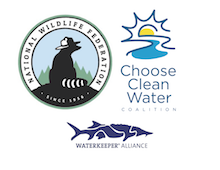Drinking Water Protection Fact Sheet
Background
After the 2014 water crisis, West Virginia passed a law requiring water utilities to develop Source Water Protection Plans (SWPPs) detailing how the water utility will protect our drinking water.
These plans must include:
- Specific engineering details about the water intake and water storage capacity,
- Inventories of Potential Sources of Significant Contamination (PSSCs),
- Management Plans to reduce or minimize the risk of contamination,
- Contingency Plans detailing how to respond in the event of a water contamination incident,
- Communication Plans to educate the public in the event of a contamination incident, and
- Feasibility studies for the installation of a real time early warning monitoring system to detect pollution.
All plans were submitted to the WV Bureau of Public Health (WVBPH) in July 1, 2016.
The law requires utilities to update these plans every 3 years with the public’s input. July 1, 2019 is the first round of updates for these important plans that detail how our drinking water sources are being protected. Water Utilities may be hosting public meetings to detail the new updates to the plans.
WV Rivers developed the Safe Water for WV program to guide citizens through this process.
What to Ask During a Source Water Protection Plan Public Meeting
Here are some good issues to raise at a public meeting for the updated plans:
- Additional contamination threats: Were there any additions to the inventory of potential contamination threats?
- Updates to Contingency Plan: What additional measure have been implemented to prepare for a contamination event? Examples may include:
- increased storage capacity of either treated or untreated water,
- back-up power generation at the water utility in the event of a power outage, or
- connection to an alternative water source in the event the primary source is contaminated.
- Early Warning Monitoring: Has a monitoring system been installed to detect contamination before it reaches the treatment plant? Are the monitoring results available to the public?
- Management Strategies: What management strategies have been implemented since the source water protection plan was first developed in 2016? Are there plans to incorporate additional management strategies in the updated plan? Examples of additional management strategies may include:
- Education and Outreach: Educate community members about source water protection and what they can do to help protect the water.
- Land Conservation: Work with landowners to permanently protect land within the source water protection area.
- Household Hazardous Waste Collection: Host collection events to collect household hazardous waste items from the community to ensure it is disposed of properly.
- Ordinances and Regulations: Working with local governments to develop ordinances and regulations that require best management practices or limit certain types of development within the source water protection area.
- Safe Water for WV: Request the water utility get involved with WV Rivers Safe Water for WV program!
For more information, contact Tanner Haid, 304-886-2665, thaid@wvrivers.org.




